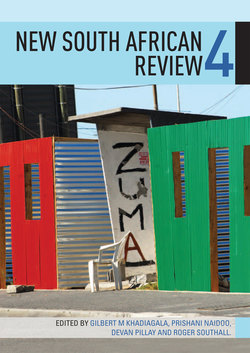Читать книгу New South African Review 4 - Devan Pillay - Страница 17
На сайте Литреса книга снята с продажи.
Deepening inequality
ОглавлениеWith such poor records in employment creation and growth, it is not surprising that the unequal distribution of wealth has not altered. The country has the unfortunate record of being the most unequal in the world, ahead of Brazil, with a Gini coefficient rising from about 0.56 in 1995 to about 0.63 in 2009.
In a country where, despite the low rate of employment, low labour force participation and pervasive casualisation, wages remain by far the most significant share of income, particularly for the poorest, it is hardly surprising that poverty remains a critical issue in spite of a relatively large social grant programme. Inequality among wage earners has increased (Strauss 2013). When measured in racial terms, inequality dynamics are also surprising: racial inequality decreased dramatically during the last twenty-five years of apartheid while it did not fall between 1996 and 2001 (Leibbrandt et al. 2010)
If workers, and in particular poor workers, have lost since 1994, who has won? Like other countries, South Africa has experienced a rapid rise in the income of the super-rich, with the share of total income earned by the top 1 per cent jumping from about 10 per cent in the 1980s and early 90s to 18.1 per cent in 2007 (Unctad 2012). This trend has been supported by an unflinching commitment to ‘orthodox’ macropolicies and is closely related to the rise of the financial sector and of its ability to absorb resources at the expense of other sectors (Fine and Ashman 2013).
The failure of the post-apartheid labour market is therefore visible in the deepening of inequality, in particular between classes. Functional inequality between capital and labour has thus been increasing steadily, as Forslund (2013) notes:
On average, real wages have been increasing less than labour productivity, at about 2 per cent per year, with labour productivity averaging about 3 per cent in annual increases since 1994 … The wage share of GDP has therefore been falling … [from 50.1 per cent in 1995] to 44.5 per cent [in 2010]. (pp. 108-109, see Figure 4 as well).
The process of work restructuring described above has been an instrument of ‘authoritarian restoration’ of employer power over workers (Von Holdt 2003). But how could such a strategy be successful, and workers be so undermined, in the context of an allegedly progressive (or rigid, for some) labour market legal framework, based on worker-employer cooperation, and by a historically strong labour movement?
